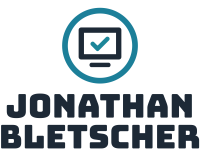In the mini article, Habits explained part 2: The cue I wrote about the so-called cue. Let’s now focus on the second step, which is the actual motivator to execute a habit – craving. This series focuses on explaining habits and how to detect, change or create new and better habits.
To understand cravings we need to understand a little bit about dopamine. Simply put dopamine is the “pleasure” chemical that our body releases when we perform any immediately gratifying behavior. Once we perceive an activity as pleasurable our body will start producing dopamine in anticipation of an activity. This anticipation surge can be even higher than the satisfaction we will receive from the action that was initially conceived as pleasurable.
In the context of habits and behavior adaption, it is important that we understand the implications and make use of this mechanism. The cue triggers the craving, once the pathways are built. This means:
- To create a new habit we need to make our brain believe the outcome is pleasurable. This needs to be repeated to a point that a cue triggers the anticipation of this reward.
- Activities such as eating junk food, reacting to social media notifications, sex, drug usage, etc. are so highly addictive as the reward mechanism is so immediate when performing any of those activities. Especially when we try to achieve long-term results, we need to find a way to make those desirable activities immediately pleasurable to program the brain.
- The anticipation of the rewards can be stronger than the reward itself
- Dopamine release will adapt itself to repeated activities and will decrease over time
How to make habits attractive/unattractive
To make a new habit attractive and get the desired dopamine release there are a couple of strategies you can utilize:
- Habit & Temptation bundling (concept – James Clear – Atomic Habits)
- After [CURRENT HABIT], I will [HABIT I NEED]. After [HABIT I NEED], I will [HABIT I WANT].
- Example: After reading my emails (current habit) in the morning, I will do 5 sales calls (a habit I need). After I finished the sales calls, I will read the news (Habit I want)
- Rewarding
- Reward yourself immediately after you performed a routine/action that you want to establish as a habit. It is important however that the habit is congruent to your target. Let’s assume you want to get in shape and went for a run. Rewarding you with junk food would be the wrong reward. Instead, reward yourself for example with a nice bath or a massage, etc.
- Belonging
- As humans, the deepest desire is to belong. Therefore it is no surprise that the most powerful driver for behaviors and norms are society, communities, family, and friends
- Pick a community or circle of people that shows the desired habits. Example: join a runners club if you want to become fitter / join a cooking Facebook group if you want to improve your cooking etc.
Make habits unattractive by:
- Habits are attractive when we associate them with positive emotions. Change the association with negative feelings. You can do so by highlighting the negative aspects of your behavior or highlighting the benefits of avoiding it.
- Make it painful. Meaning finding ways to “punish” your behavior. Humans go to great lengths to avoid pain. Example: Donate 100 $ to a charity if you eat sweets despite wanting to stop it.
In the end, I wanted to highlight that dopamine levels will adapt to repeated actions. Meaning at some point after repeating and gaining the same rewards the levels will fall. To retain the attractiveness of actions keep it:
- Novel: Change up the way you do things
- Random: Rewards and the kind of reward should be random
- Rewarding: Reward yourself, but not always


Pingback: Habits explained part 4: Routine/Response - Jonathan Bletscher - Leadership, Management, Mindset & Growth